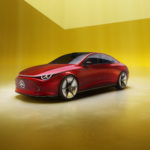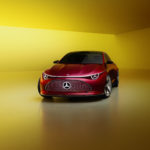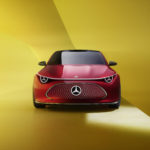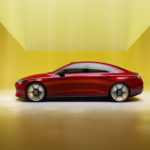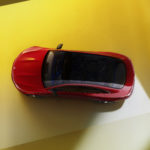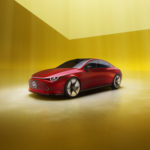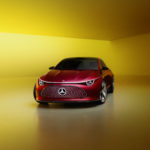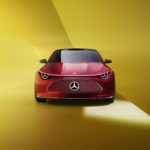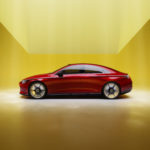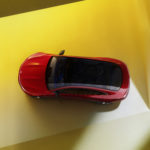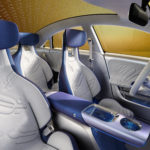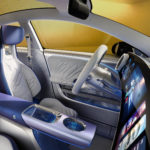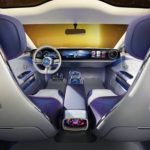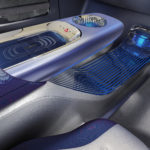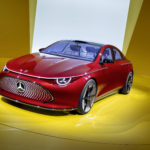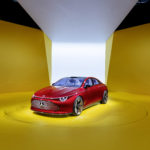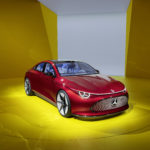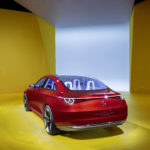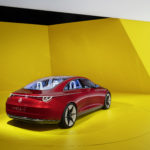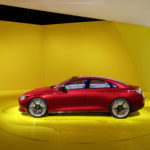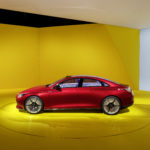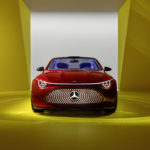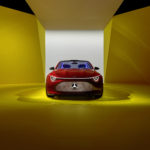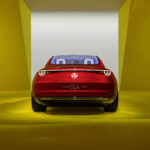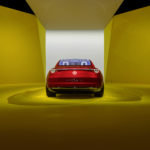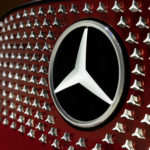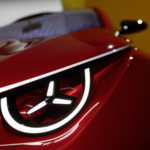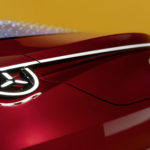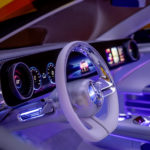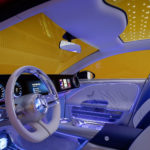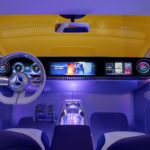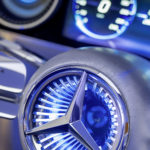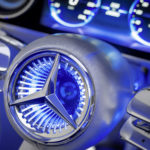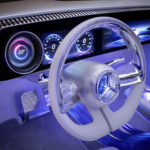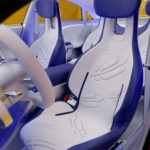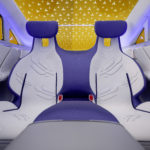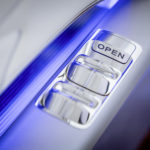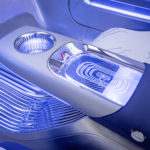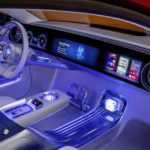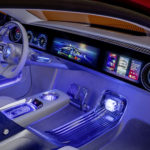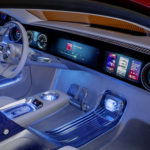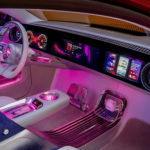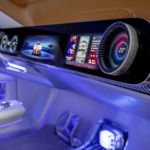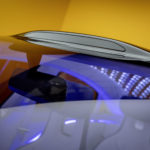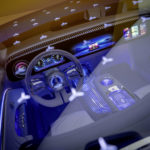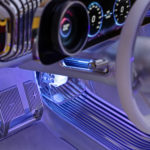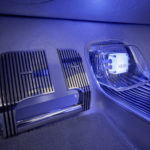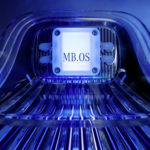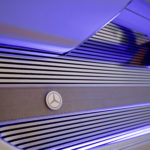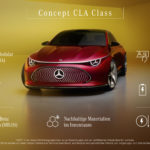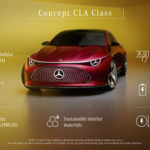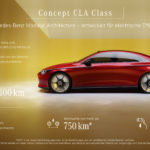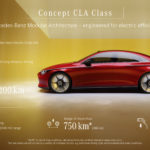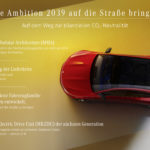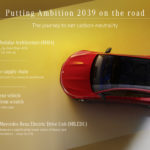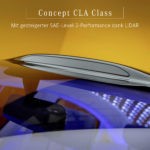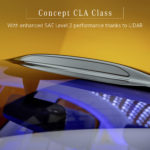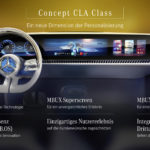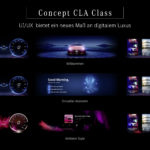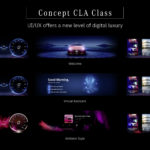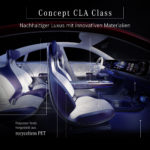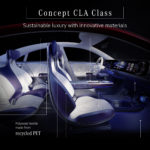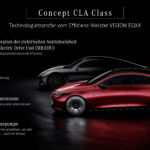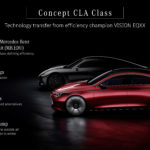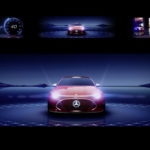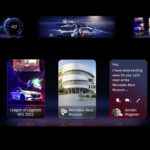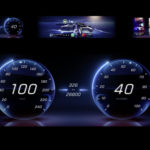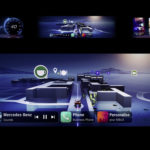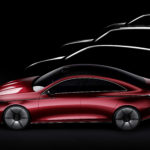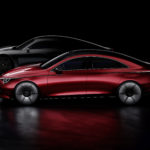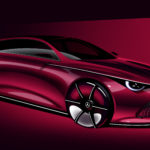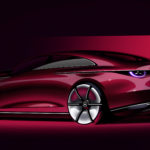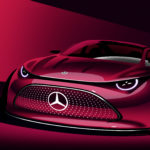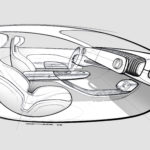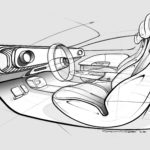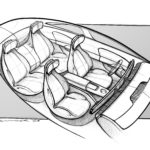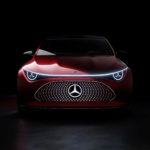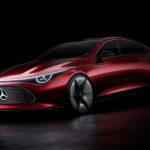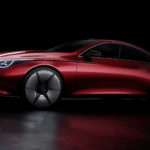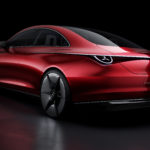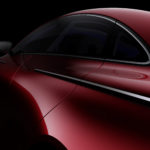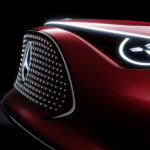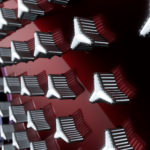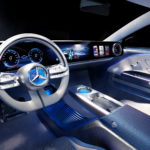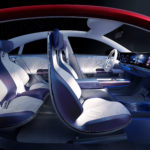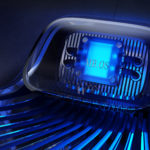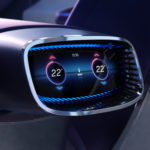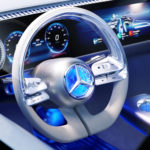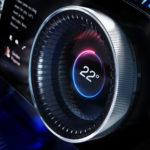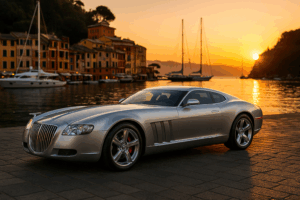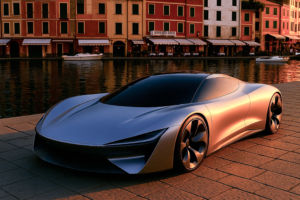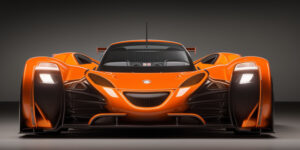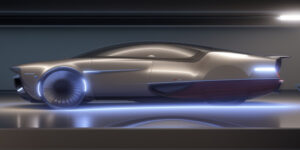Mercedes-Benz Concept CLA Class
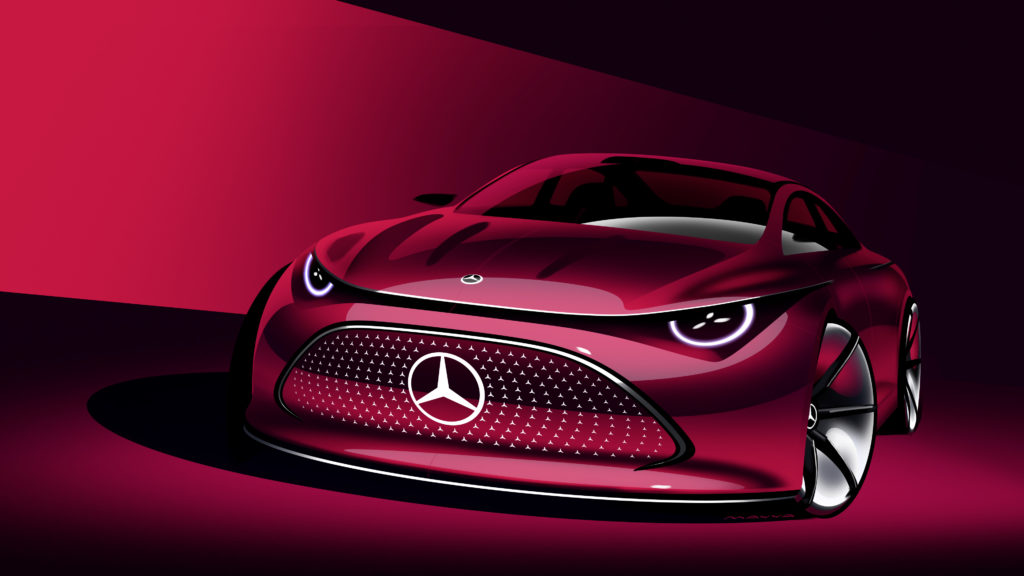
Mercedes-Benz Concept CLA Class – Designskizze Exterieur Mercedes-Benz Concept CLA Class – Design Sketch Exterior
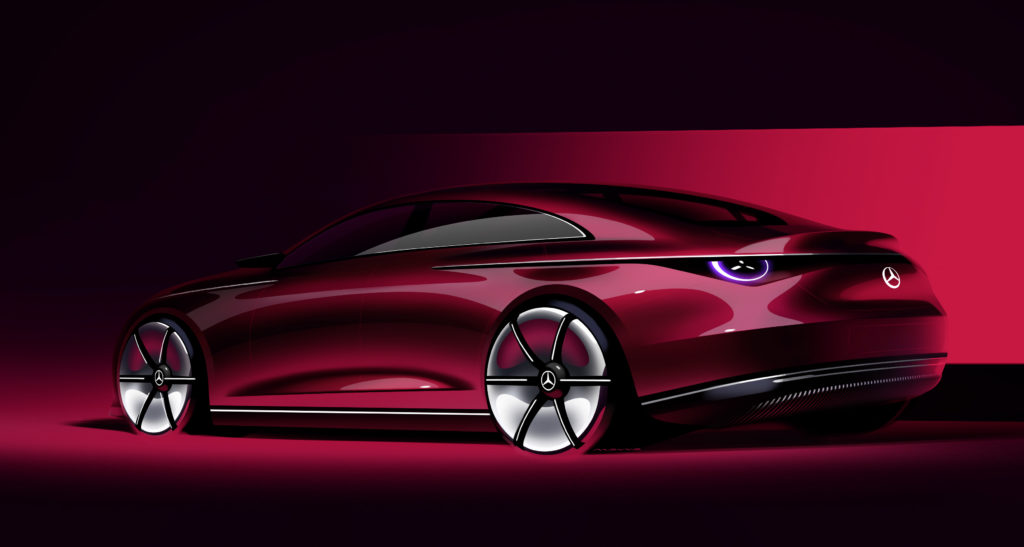
The Mercedes-Benz Concept CLA Class unveiled at IAA Mobility 2023 in Munich, Germany, offers a close-to-production insight into the upcoming family of vehicles that stands at the gateway to the brand. At the cusp of a new electric and digital age, this represents the company’s vision to elevate this important vehicle class, based on the long-term portfolio strategy. Designed on the forthcoming Mercedes‑Benz Modular Architecture (MMA) platform, the exterior aesthetics of the Concept CLA Class stand for iconic design and dynamic performance. Meanwhile, its interior focuses on the customer experience with exceptional comfort and convenience for an electric and digital future.
“The Concept CLA Class is the forerunner for an entirely new all-electric segment of entry-level vehicles at Mercedes-Benz. The range will comprise a total of four new models – a four-door coupé, a shooting brake and two stunning SUVs – each with significantly elevated product substance. This new model family is inspired by a generation of car buyers who want that unmistakable Mercedes-Benz feel, with more features, even greater comfort and safety and the most advanced technology. They also seek a sustainable choice that is a cut above the rest. This hypermiler is the one-litre car of the electric age, with a range of more than 750 kilometres (466 miles) in the WLTP1 and energy consumption of just 12 kWh/100 km. Based on the MMA platform, it provides an insight into the first complete family of Mercedes-Benz electric cars developed from scratch to put our Ambition 2039 on the road, whereby we aim to achieve net carbon neutrality along the entire value chain in our fleet of new vehicles in 2039.” Ola Källenius, Chairman of the Board of Management of Mercedes-Benz Group AG

Technology leadership is apparent in the MMA platform underpinnings such as the next-generation electric-drive system aiming for a range of more than 750 kilometres (466 miles) (WLTP) [1]. The Mercedes-Benz Modular Architecture (MMA) is an electric-first platform engineered for a family of four vehicles covering a range of body styles. It is set to play a major role in accelerating the ramp-up of the Mercedes-Benz electric fleet. As a fundamental part of the wider electric strategy, it will help the company attain its ambitious targets. All vehicles on the MMA platform are being developed in accordance with the Mercedes-Benz “real life safety” philosophy. Mercedes-Benz has set safety standards for decades, pursuing a vision of accident-free driving.
Meanwhile, the new operating system “MB.OS” is the basis for an unparalleled user interface and user experience (UI/UX) via the MBUX Superscreen derived from the innovative display in the VISION EQXX incorporating advanced real-time graphics. The Concept CLA Class showcases the use of sustainable materials throughout its structure and interior. This ranges from almost CO₂-free steel and CO₂-reduced aluminium to sustainably produced and processed leather upholstery as well as trim made from paper. Overall, the show car represents the approachable interpretation of desire for a youthful and dynamic global market segment.
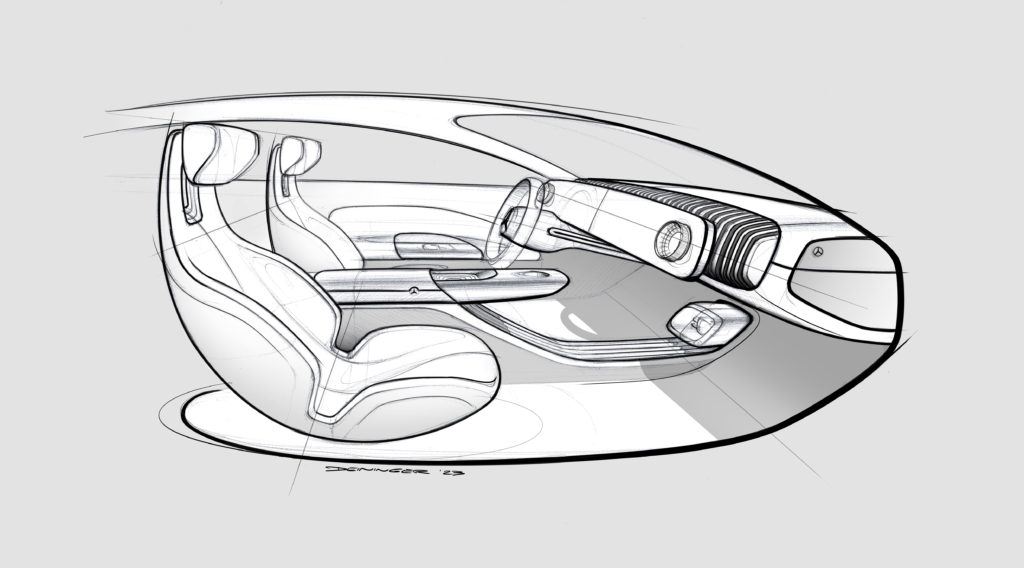
“The technology that provides the foundation for the Concept CLA Class represents an entirely new approach for Mercedes-Benz and incorporates many learnings from our groundbreaking VISION EQXX technology programme. For instance, our engineers have maximised efficiency by driving down losses in its 800 V electric-drive system. It also features innovative battery cell chemistry as well as a high level of integration enabling excellent energy density. I am certain that our MMA platform will enable us to offer our customers in this market segment a class-defining combination of performance, sustainability, safety and comfort paired with an outstanding digital experience.” Markus Schäfer, Member of the Board of Management of Mercedes-Benz Group AG, Chief Technology Officer
As the first car to be developed on the all-new electric-first Mercedes-Benz MMA platform, the Concept CLA Class points the way for the next-generation electric-drive technology underpinning the series-production model. With an anticipated range of more than 750 kilometres (466 miles) (WLTP)[1], the electric drive leads by a considerable margin, defining the benchmark in its class. This represents a remarkable energy consumption of around 12 kWh/100 kilometres (5.2 mi/kWh), making the Concept CLA Class the one-litre car for the electric age. Directly derived from the electric-drive system in the VISION EQXX, the new in-house developed drivetrain comprises an 800 V electric architecture combined with a battery with exceptional energy density and a highly efficient electric drive unit. In the Concept CLA Class it is configured for sporty rear-wheel drive. However, the modular design means it is also suitable for 4×4 vehicle applications. Making its debut in the Concept CLA Class, the advanced next-generation drivetrain is scalable to fit other use cases, including in other vehicle segments.
High-voltage battery
The innovative battery system under development for the MMA platform is based on a highly modular architecture whereby customers can choose from two different cell chemistries. The top-level variant features an anode design with silicon-oxide content for excellent energy density. Meanwhile, the entry variant leads the way in the segment with its use of lithium-iron phosphate. The battery itself has a remarkably small overall volume. In a first, its cell modules are held in place using adhesive rather than screws. The resulting structure is not only lighter than a conventional battery configuration; it is also stiffer, which offers benefits in crash safety. Likewise, the 800 V configuration facilitates a high level of electric endurance in a compact package and with lower cooling requirements. The high-voltage configuration also enables high-power 250 kW DC charging, delivering up to 400 kilometres (248 miles) of range in 15 minutes.
Mercedes-Benz Electric Drive Unit (MB.EDU)
Lightweight, powerful and compact: The new highly efficient MB.EDU, comprising motor, transmission and power electronics, was developed entirely in-house. Based on a modular concept, this class-defining unit is the first in a family of drive units engineered to meet a wide range of performance demands across a number of model lines. The 175 kW permanently excited synchronous machine is paired with a two-speed transmission. The high-performance power electronics incorporate control of motor and transmission in a single processor and feature a silicon carbide inverter for exceptionally efficient power usage. This reflects the high degree of functional integration throughout the MB.EDU that results in a compact overall package weighing less than 110 kilograms. Its extremely high energy efficiency of up to 93 percent from battery to wheel in long distance driving is thanks to meticulous minimisation of losses throughout the system and places it at the forefront of the sector.
Sustainability advances in the MMA electric-drive system
The permanent magnet synchronous motor in the Mercedes-Benz Electric Drive Unit (MB.EDU) features a significantly lower share of heavy rare earths than previous generations – close to 0 percent. When it comes to batteries, the new MMA electric-drive system takes a major step forward in net carbon-neutral manufacturing. Not only is cell production net carbon neutral but also cathode production. This will allow the company to reduce the carbon footprint of the cells by 40 percent. Further emissions reductions will be achieved through using renewable energy in the production and refinement of raw materials.
Bidirectional charging
Transforming vehicle into household energy storage device: The Concept CLA Class also offers a glimpse into the future of networking between electric vehicles and the energy grid. Software- and hardware-based bidirectional charging shows how class-defining technology leadership opens up new potential for customers and energy providers alike. When connected to a compatible bidirectional DC charging station, the vehicle becomes an energy storage device that could, for instance, store solar power for use later. Most importantly, it can also serve as an electricity supply, either Vehicle-to-Home (V2H) or Vehicle-to-Grid (V2G). The use of bidirectional charging may be subject to market-specific conditions in respect of legislation and the requirements of energy suppliers.
One example of V2H is the provision of back-up supply in the event of a power outage, while V2G applications include helping to balance peaks and troughs on the power grid or even the trading of green electricity on the open market. In all situations, the intelligent bidirectional charging system ensures the vehicle has sufficient charge to meet customer needs at specified departure times. Through the option of bidirectional charging at home, Mercedes-Benz is fulfilling the desire of many customers to combine their own individual mobility with a more sustainable way of living.

